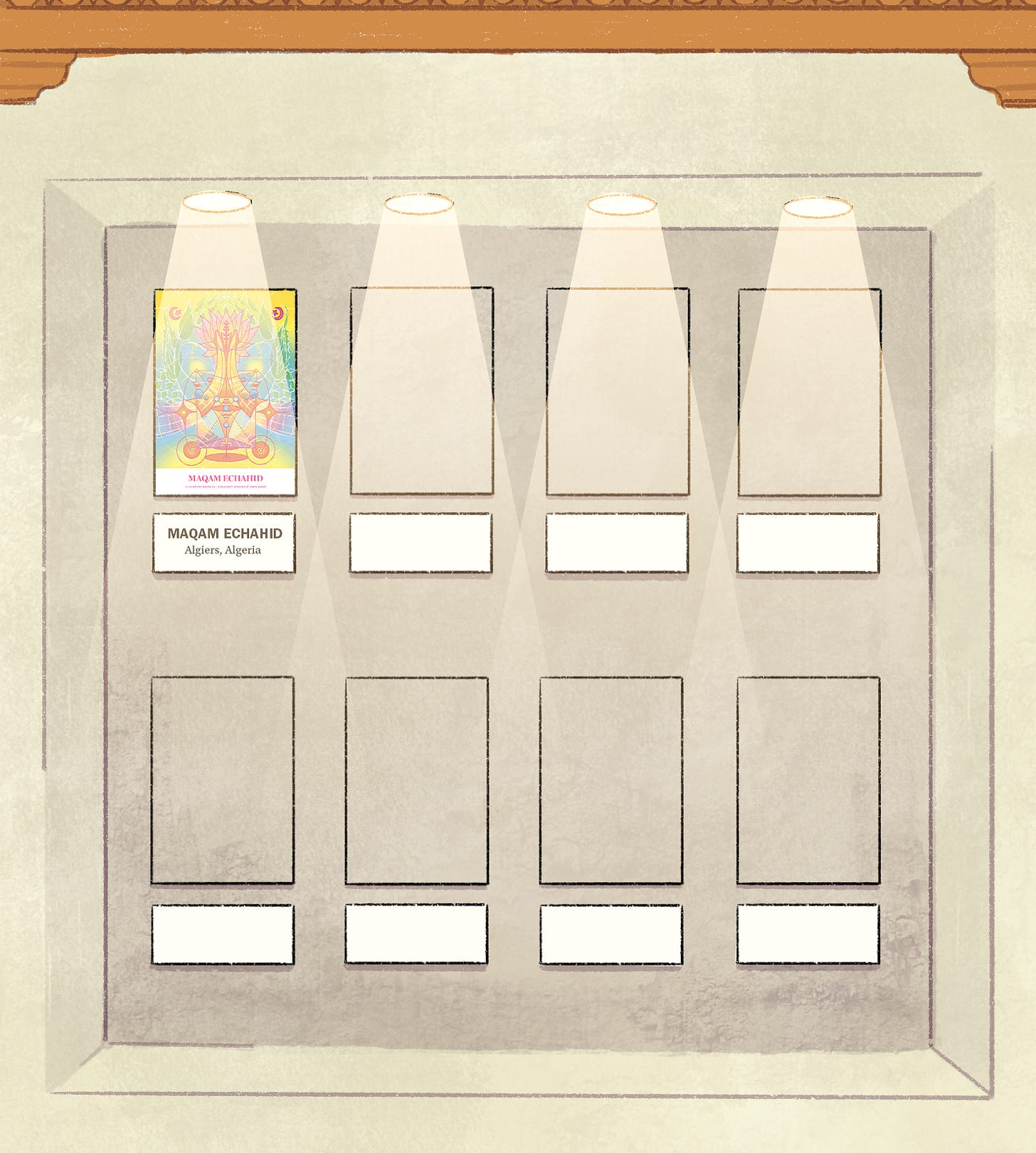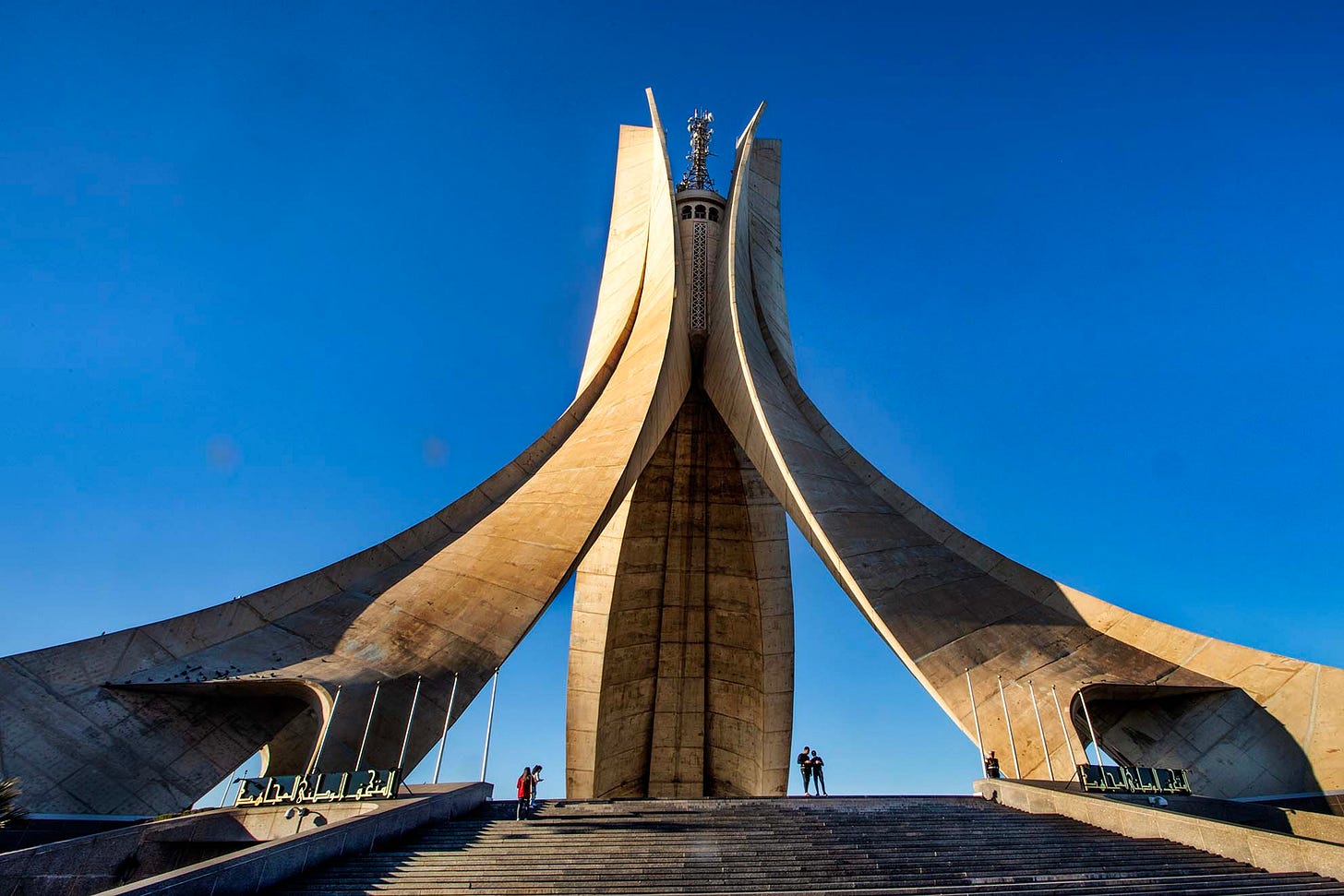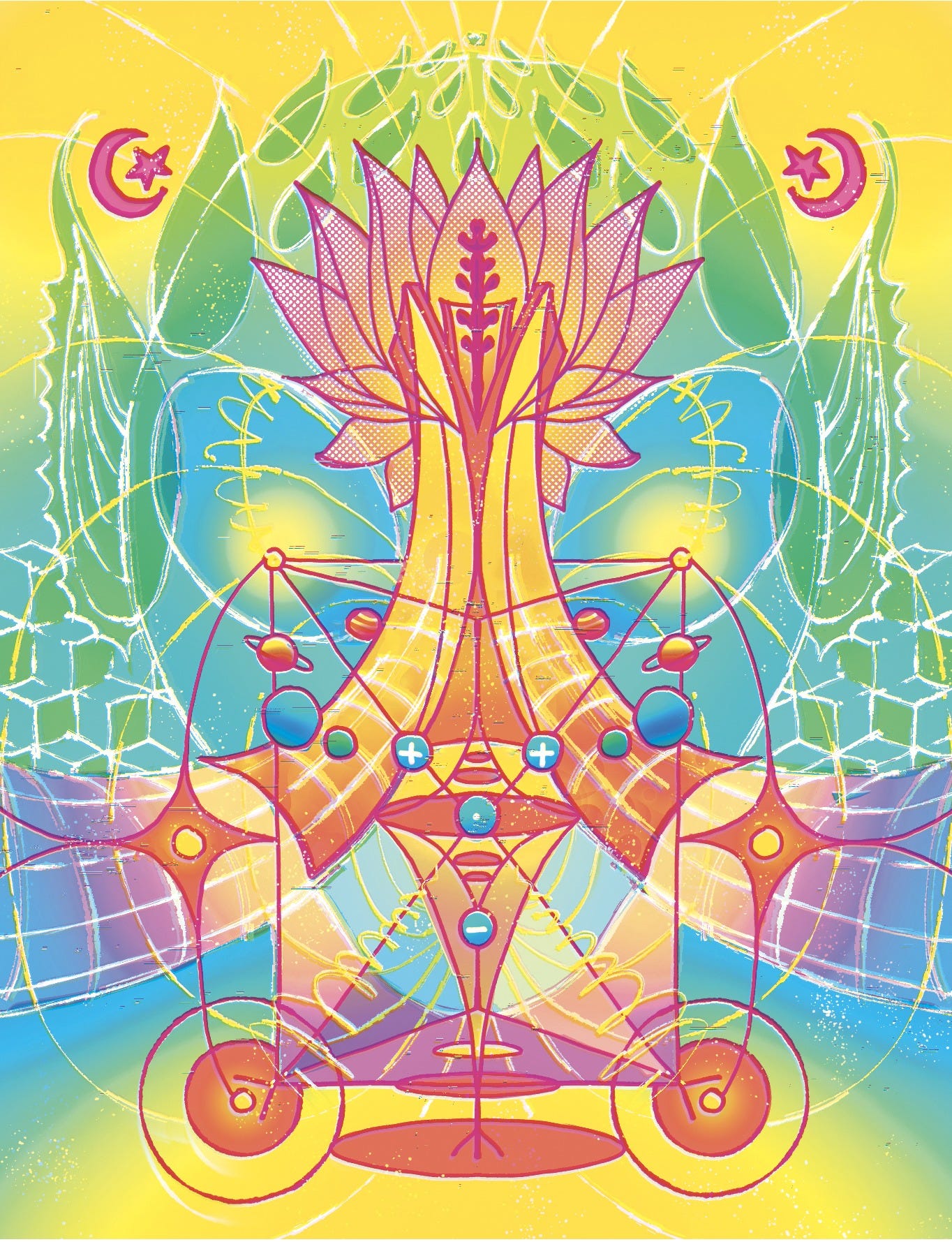The Museum of Memory: Part I
How we choose to remember: Maqam Echahid
Curated by Shola Lawal. Art direction by Wynona Mutisi
The Museum of Memory is a limited series by The Continent that tells the stories of some of Africa's most iconic monuments.
Located in the Al Madania neighbourhood on the eastern edge of Algiers, Maqam Echahid – the Martyrs’ Memorial – towers over the city, overlooking the bay.
Three massive, concrete palm fronds converge 92m into the sky, cradling an “eternal” flame between them. Each leaf, guarded at the tip by a soldier, symbolises a different pillar of Algerian life: culture, agriculture, industry.
The monument was unveiled in 1982 to mark the 20th anniversary of Algeria’s independence from France. It was designed by Bachir Yellès, an icon of contemporary Algerian art. Yellès collaborated with other artists – including Polish sculptor Marian Konieczny, who designed monuments for victims of Nazi Germany.
The history commemorated by Maqam Echahid is recent and brutal.
After conquering the Ottoman-ruled Arab nation of Al Jaza’ir in the 1830s, France annexed the region – absorbing it into France rather than governing it as a colony. Some 1.6-million French settlers – called pied-noirs or “black feet” – moved in. Algerian locals moved the other way, to France, mostly for menial work. The white settlers quickly became the dominant class. Arabs were treated as lowly subjects and could only acquire French citizenship if they renounced Islam. For the proud, mostly Muslim population, giving up that identity was a non-starter. Many felt deep resentment towards France and settlers. Racial tensions spurred calls for independence.
On 1 November 1954, rebel fighters or maquisards of the liberation front independence movement attacked military locations in Algiers.
Ahmed Ben Bella, a former soldier who fought for France, was one of the rebel leaders. France imported elite soldiers from the metropole to suppress the rebels and recruited thousands of locals, called Harkis, to “rat hunt” rebels in Arab neighbourhoods.
In France, a deadly parallel war broke out between rival rebel factions who had built cells there. In Parisian slums, each group bombed the other’s hangouts in cafés and dingy hotels. Some 3,500 to 5,000 people were killed in France, according to varying records.
The fighting in Algeria was brutal. Military targets were fair game for the liberation front, but so were civilian settlers. In one account, rebels attacked the city of Phillipville, present-day Skikda, killing any Europeans on sight, including women and children. French soldiers retaliated, rounding up and executing suspected rebels without trial.
The crackdowns were so brutal that even French people began to denounce their government. Not long after, a coup toppled the wartime government and led to anti-war president Charles de Gaulle taking power.
Algeria was declared independent on 3 July 1962, with Bella becoming the first president. By then, between 500,000 and a million soldiers and civilians had been killed. Most settlers fled to France, as did Algerian Jews and the Harkis, who were seen as traitors. The liberation front still dominates today. Its green, white and red flag became the national colours.
Franco-Algerian relations are still tense, and that shows in how Algerians remember their martyrs.
Visitors to Maqam Echahid have the option of also visiting the National Moudjahid Museum beneath it, as well as its open plaza, which regularly hosts concerts, events, and exhibitions. Nearby, the Bois des Arcades forest offers shaded relaxation spots and wonderful views.
Locals, however, often visit the monument to beg Allah for mercy in the afterlife and read verses of the Qur’an to aid their passage, writes researcher Miloud Boukhenoune in a 2021 paper, adding that some even weep, as they relive the shocking cruelties of the war. remember their martyrs.




